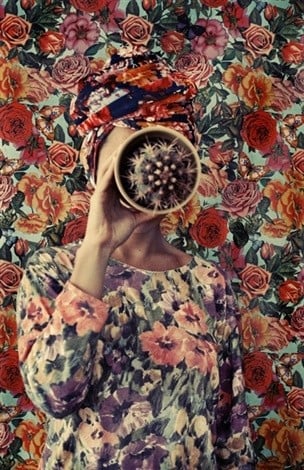
There is a lot of discussion about what it means to be a Latin American artist, and the main question that comes out of this discussion is: Can all artists from this section of the globe be lumped into one cohesive group? Obviously, it would be wrong to reduce such a diverse mix of artists to one category or style. With Latin American auctions just having taken in place in May, we thought it an opportune time to take a look at the artists you should be keeping an eye on. As you will see, their practices are as diverse as the countries they hail from.
Alexandre Arrechea, The Map (2014). Watercolor on paper, 83-3/4 x 176-1/2 in. (unframed). Courtesy of Magnan Metz Gallery.
Cuban artist Alexandre Arrechea started his career in 1994 as a member of the artist collective Los Carpinteros, and remained a member until deciding to pursue his own work in 2003. The group was modeled after the idea of the artist guild, emphasizing collaborative output over individual output, often exploring the themes of process and creation rather than the end product and results. Since going solo, Arrechea’s art has taken a political turn, with the artist creating large installations that comment on issues regarding surveillance, individual privacy, and public space. He has stretched this study across all media to further delve into these themes. A solo show of his work opened on May 23 at the Museo Nacional de Bellas Artes in Havana, Cuba, and it is centered on the question of silence. To prepare works for this exhibition, Arrechea spent time taking pictures of Havana. He then printed them and cut out pieces to construct large-scale collage works resembling African masks. The mask is his way of working through what silence means and how it impacts our ability or inability to communicate both publically and privately.
David Guzman, Integración (2004–2014). Volcanic rock and steel, 39 x 39 x 15 3/4 in. Sold for $40,000 at Sotheby’s New York on May 26, 2015.
David Guzman is a Mexican sculptor whose work has been featured in Sotheby’s annual Latin American sale since 2012. This year’s sales, which took place on May 26 and 27, featured a sculptural work titled Integración—a geometric construction of three interlinking rings made out of volcanic rock and steel, which explores the balance between industrial and natural materials. The artist’s sculptures are usually circular and composed of swerving and rounded shapes.
Lucia Fainzilber, Untitled #31 (2014). Inkjet print, 36 x 24 in. Courtesy of Praxis.
Argentinian artist Lucia Fainzilber has recently exploded in the art world. This past winter, Fainzilber had a solo show at Praxis and also exhibited at both Art Miami New York and the Art15 fair in London. In some of her most recent photographs, the artist examines the human struggle for creating identity. Through fashion, she produces surrealistic self-portraits in which her ‘self’ is indistinguishable from her environment. This optical illusion causes the artist to become an anonymous figure that viewers can embody and explore in order to isolate their true identity from their surroundings. Fainzilber plays with camouflage that both hides and expresses the individual.
Raul Recio, from the series “Almost Paisaje” (2015). Acrylic on canvas, 66 x 33 in. Courtesy of Lyle O. Reitzel.
Dominican artist Raul Recio is a writer-turned-visual-artist. Inspired by the travels of the famous botanist Erik Ekman, Recio relocated to the island of La Hispaniola, built a house, and began painting in an attempt to unearth nature’s mysteries. Energy vibrates throughout Recio’s works, which are influenced by his tropical environment. For his most recent paintings, the artist used glowing colors, such as vibrant greens and electric blues, to create fantastical, abstract-impressionistic landscapes. Recio is currently represented by the Lyle O. Reitzel gallery, where he was recently featured in a solo exhibition.
Carlos Quintana, Untitled (1999). Oil and acrylic on canvas, 51.2 x 38.1 in. Sold for $6,875 at Sotheby’s New York on May 26, 2015.
Cuban artist Carlos Quintana started out drawing comics, but eventually began illustrating subconscious and spiritual narratives that explore the mystery of the individual. The artist uses frenetic lines, rich textures, and strong washes of color that evoke the styles of Francis Bacon and Willem de Kooning. His expressive gestures and vigorous brushstrokes expose the complex and tumultuous emotions that both define a person and connect them to others and their surroundings. Quintana’s first solo exhibition in New York, “Images of a Place that Never Existed,” recently took place at the National Arts Club.